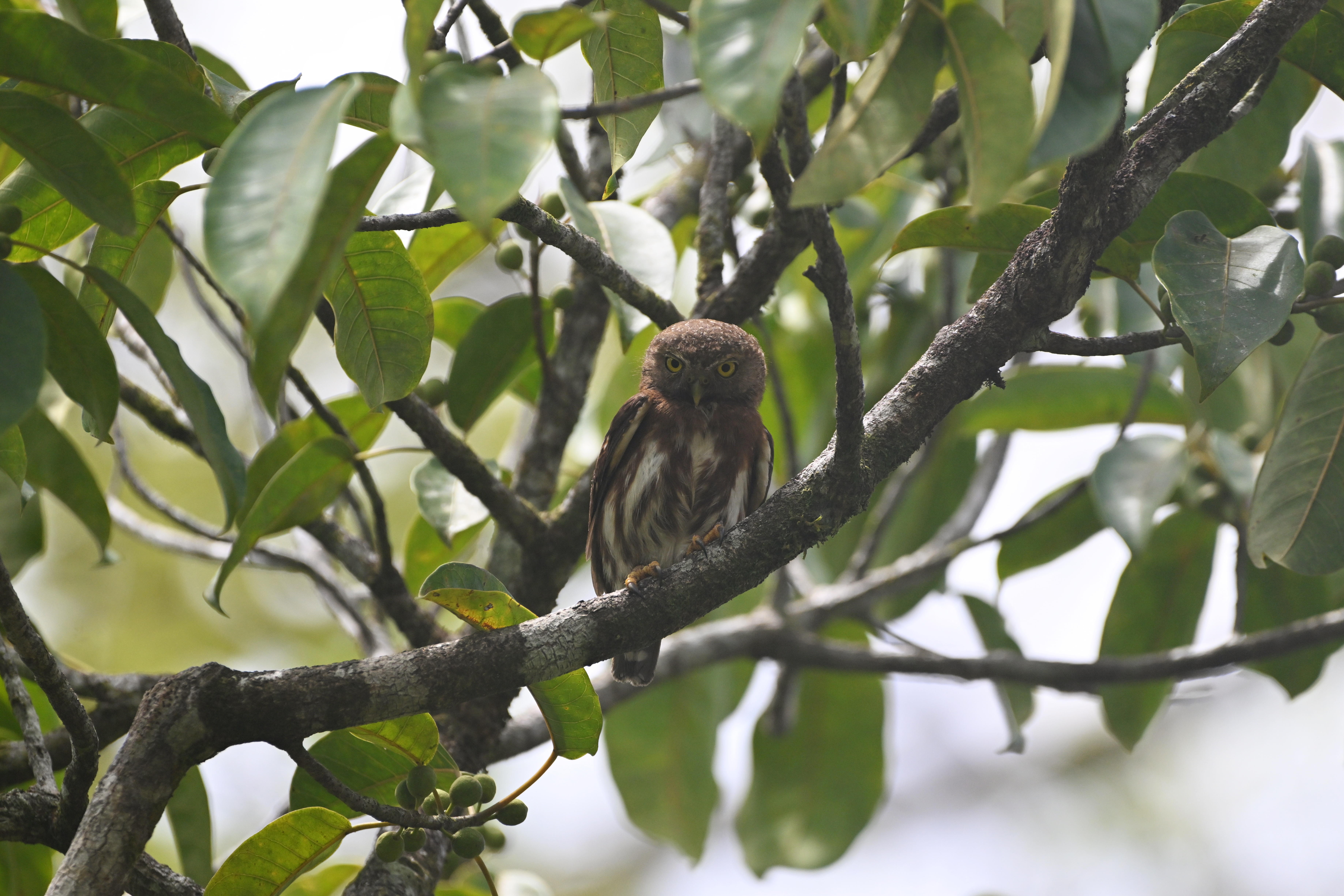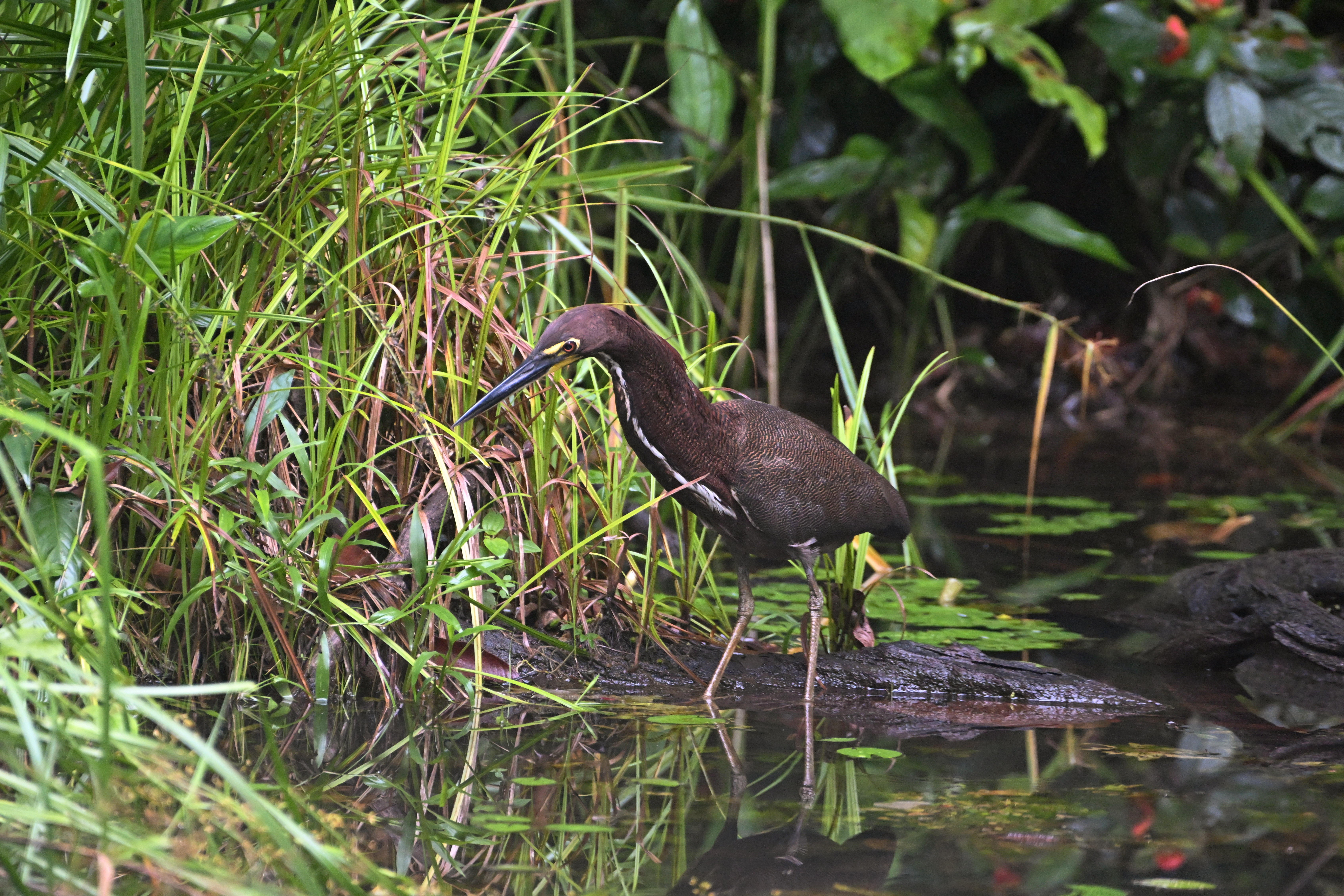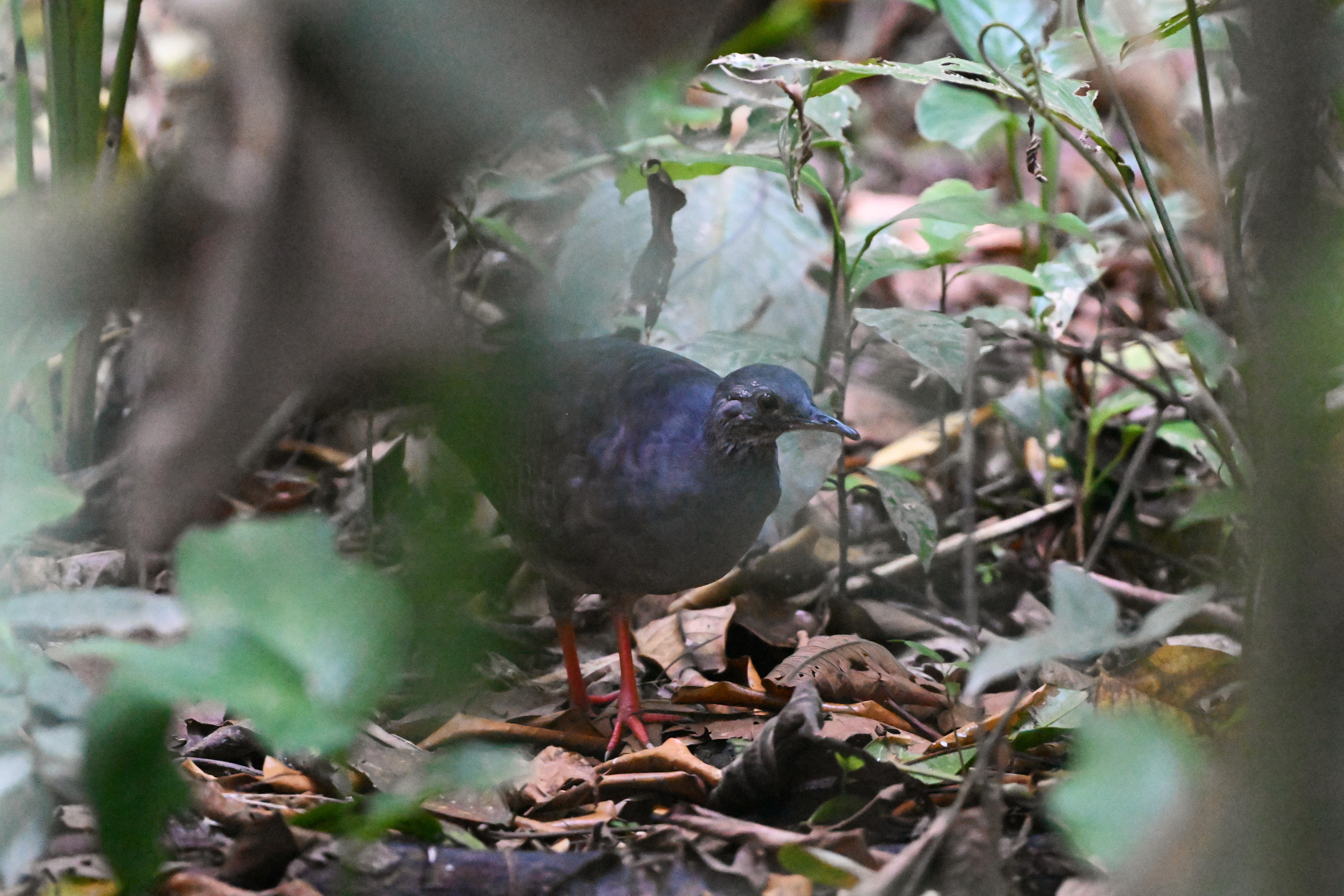new & noteworthy
The objective for D’s farewell birding tour was three-fold: first, revisit some of our favorite birding hotspots; second, devise an itinerary that would deposit him in the San Carlos area for the Volcanic Tournament; and, third, try one last time to find a handful of the nearly impossible target species that have eluded him the last couple of years. There were entirely too many tempting options, so D opted to kick off the trip in the same way that we had started our Costa Rica explorations two-and-a-half years ago: with a visit to Sarapiqui.

The first time we visited Sarapiqui, we had stayed in a birding lodge. This time, D decided to spend the night at La Selva, a research outpost run by the Organization for Tropical Studies. La Selva, incidentally, recently received USAID funding to upgrade its buildings and equipment to improve energy efficiency and sustainability — an initiative we’re happy our government is supporting. One of the first privately-run forest reserves in the country, La Selva welcomes students and researchers from all the world in addition to operating a small trail network for guided tours. We had visited once, but it was during high season, and the place was disappointingly overrun with visitors. This time around, there were a couple of U.S. student research groups, but otherwise D mostly had the place all to himself.

Included with D’s stay was a guided three-hour walk. The guide asked whether D was interested in anything in particular — insects, snakes, birds — and, after ascertaining that D was a birder, asked whether D had a list of targets. There weren’t many realistic possibilities, but hope springs eternal, and D’s short list of nearly impossible targets helped the guide pick a route and identify which handful of birds to try to coax out of the dense foliage. None came forth, but it was an immensely pleasant walk all the same, with good sightings of some 40 species, not to mention monkeys, white bats, peccaries, and a sloth D subsequently found while birding on his own after the tour.

The find of the afternoon was a slaty-breasted tinamou, a notoriously difficult species whose unexpected appearance made the guide chuckle. He had been using playback to try to locate a little tinamou, a more common species D had heard before but never seen. The slaty-breasted is a significantly scarcer species, but D had already managed to photograph it once, so it wasn’t on his target list. Birding is funny that way sometimes. The following day, when D arrived in Boca Tapada, he ran into a couple of guides from Rancho Naturalista, which we’ve visited a couple of times; in fact, one of them guided us during our first visit. They were looking for the very same slaty-breasted tinamou D had just seen at La Selva. D joined the Rancho guides and another guide from the San Carlos area on an unsuccessful quest to find some elusive, nocturnal quail, but otherwise kept to himself. The Rancho couple scoured the woods for the slaty-breasted tinamou while D continued his search for its cousin, incredibly grateful for his tinamou sighting a couple days earlier.

While that initial guided walk did not yield any lifers, D did not leave La Selva empty-handed. During his pre-breakfast walk the following morning, D noted commotion in the canopy a couple hundred feet ahead and hurried over to catch a glimpse of a gray-headed kite, a “scarce hawk of lowland tropical forest,” according to eBird — emphasis on the “scarce.” The kite was agitated and kept jumping among the treetops, but he settled down in the canopy long enough for D to snap a photo. A lifer he had spent a long time chasing! D did not have to work nearly as hard for his next new bird: a Central American pygmy-owl, which was nesting a few feet from the reception of D’s hotel in Boca Tapada. By the time D left Boca Tapada two days later, he would add four more species to his life list: three extremely difficult birds of which D only caught the briefest of glimpses (gray-breasted crake, short-tailed nighthawk, and the aforementioned little tinamou – finally!), as well as the rufescent tiger-heron pictured above.

Pictured from top to bottom, noteworthy species from D’s farewell birding tour to date: Central American pygmy-owl; rufescent tiger-heron; slaty-breasted tinamou; gray-headed kite. The pair of honeycreepers — shining and red-legged — are neither new nor noteworthy in and of themselves; both are quite common, the latter especially. What does make this photo remarkable is that it’s the first time D has managed to capture both species together, which he’s been trying to do ever since he laid eyes on these diminutive, dazzling tanagers.
